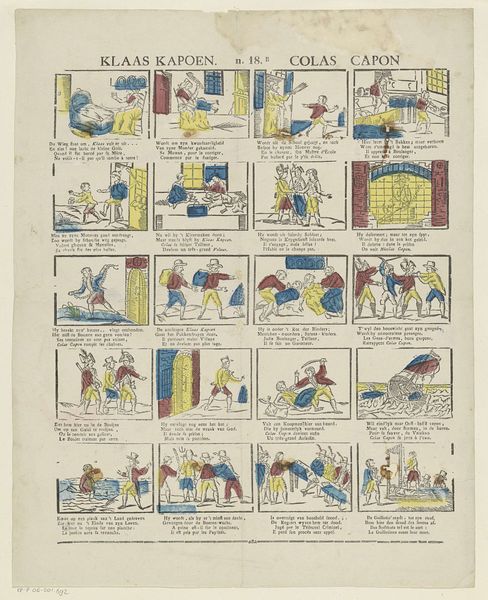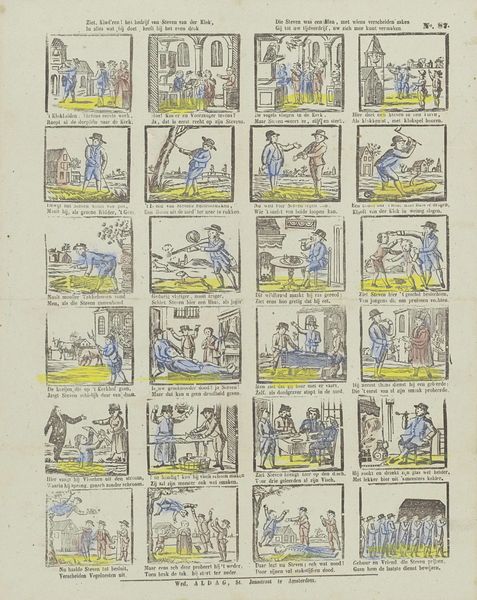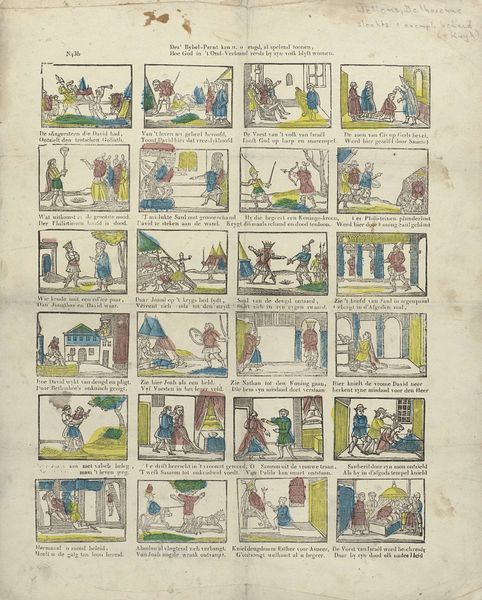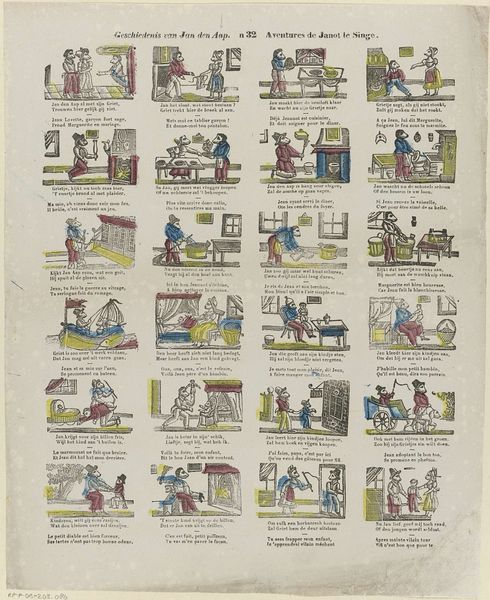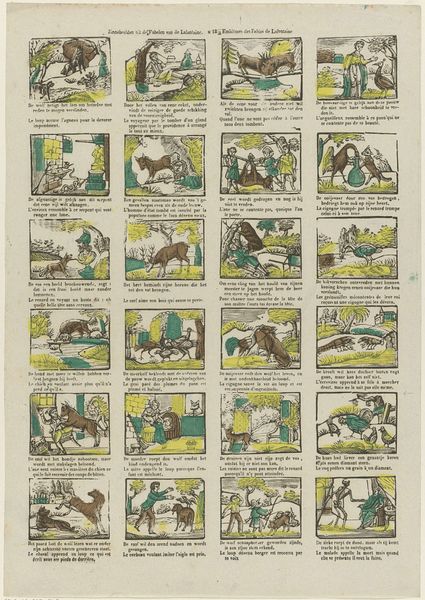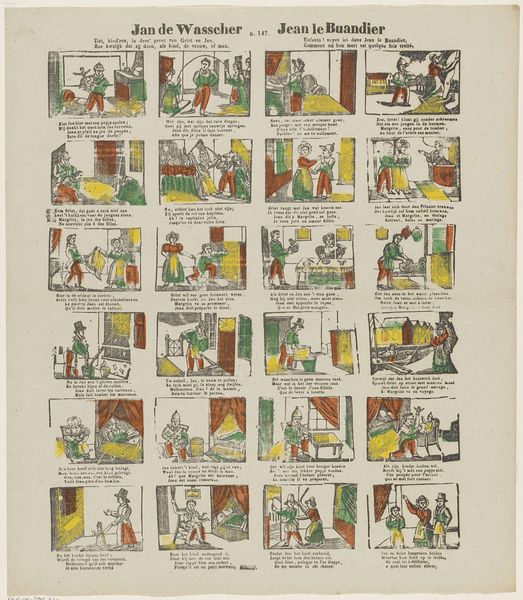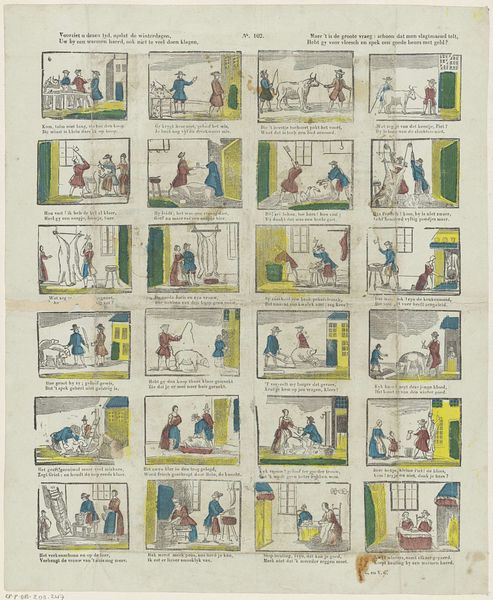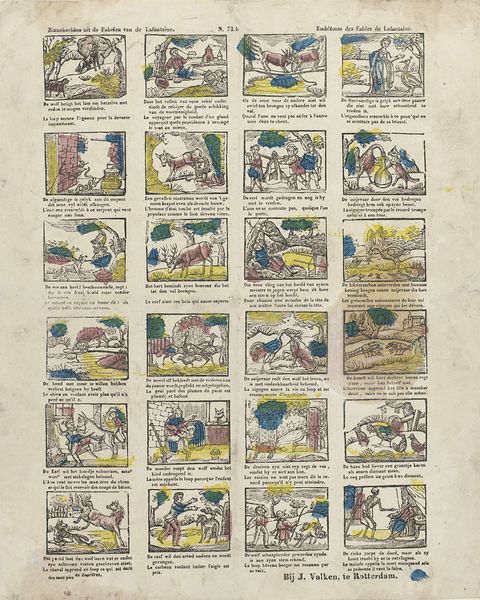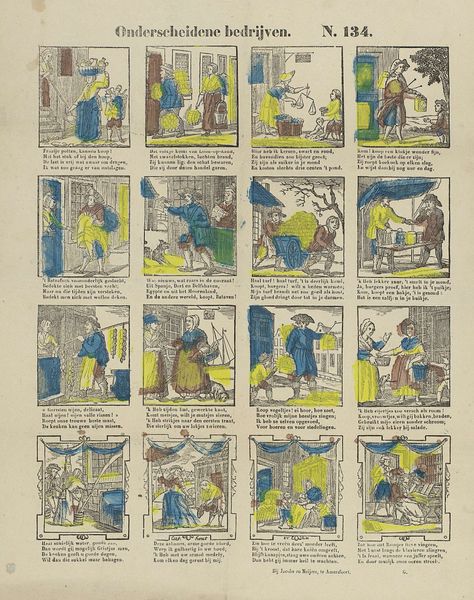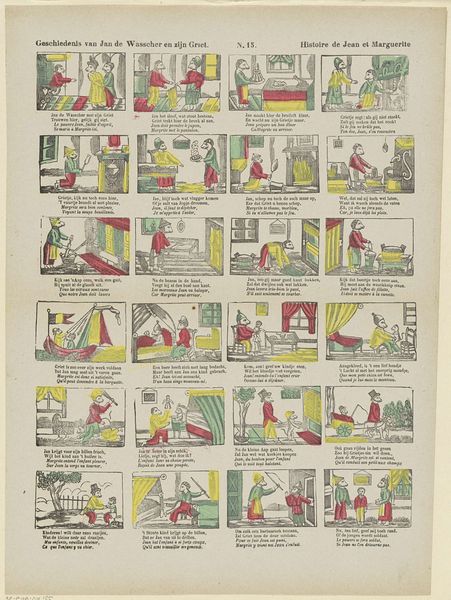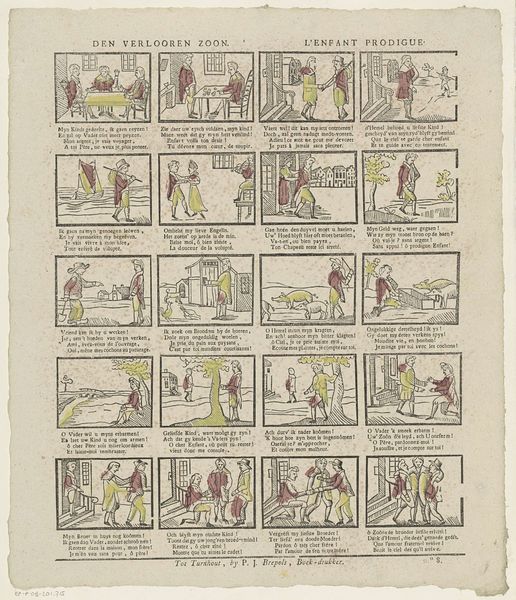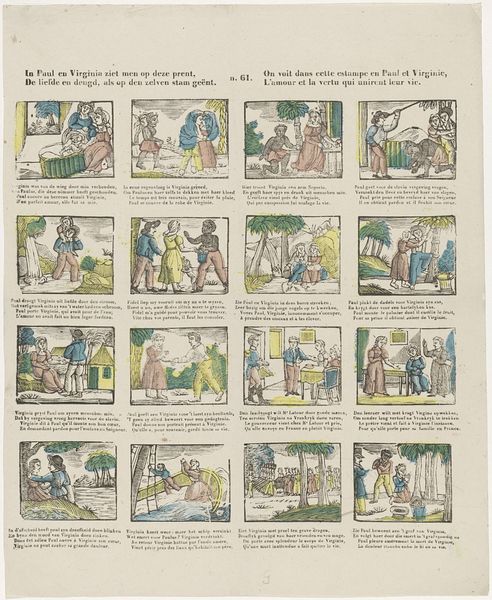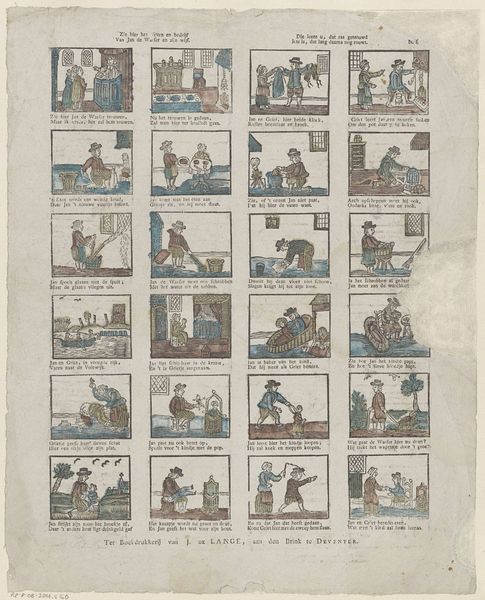
Gepaste boerterij mag u, o jengd, vermaken, / Doch volgen geen guitenstrek van Uilenspiegel op, / Blijft deugd en plicht verwand, - dan zult gij vreugde smaken, / Dan stijgt dit echt vermaak - die zielsvreugd staâg ten top / Prenez des amusements honnêtes, mes chers / Ne suivez pas les friponneries d'Espiègle / Un plaisir innocen vous rendra gais, contents. / Il faut que le plaisir ne depasse la regle 1866 - 1902
0:00
0:00
drawing, print, engraving
#
drawing
#
narrative-art
# print
#
folk-art
#
comic
#
genre-painting
#
engraving
Dimensions: height 430 mm, width 327 mm
Copyright: Rijks Museum: Open Domain
Curator: This intriguing piece, attributed to Franciscus Antonius Beersmans and dating from 1866 to 1902, is titled "Gepaste boerterij mag u, o jengd, vermaken…," a comic strip composed of engravings. What stands out to you? Editor: Visually, the sequential layout is immediately compelling. It seems to be aiming for a simplistic aesthetic, yet there's a disjointed feel. Each frame feels isolated. The figures are somewhat stiff. It brings to mind the formalist concerns of narrative structure and composition, and raises some initial questions. Curator: Indeed. The structural arrangement—the grid-like format—echoes early forms of visual storytelling, much like the moralizing broadsides circulating at the time. And the application of colour in selected spots to the otherwise black-and-white image—yellow for example—serves an expressive as well as structuring role here. The accompanying Dutch and French verses reinforce the narratives—guiding viewers to interpret the comic's moral compass, don’t you think? Editor: Precisely, and here’s where historical context becomes invaluable. Beersmans appears to employ images to construct the notion of proper behaviour and virtue for youngsters and it’s fascinating to see what is included and omitted within a society, its norms, and expectations of that time. This, undoubtedly, had a strong didactic agenda and operated under the auspices of social and political norms prevalent in that moment. The limited colour palette too has potential. The symbolic intention needs more exploration to determine a possible purpose. Curator: I see your point. From a formal perspective, this coordinated, if rudimentary, palette adds layers and pulls disparate vignettes together. Its execution reflects its likely status as popular imagery intended for mass consumption; the engravings allow efficient reproduction to facilitate widespread distribution. What about those choices and limitations appeals to its audience? Editor: A critical viewpoint unveils further complexity in the matter. Are the social regulations genuinely being bolstered or possibly subtly resisted or ironically observed? The comic framework allowed a form of expression. The relationship between image, verse, intent, and reception at that specific historical juncture is something to explore. Curator: I concede. This opens fresh avenues for viewing and engaging the work. My gaze has definitely broadened to embrace deeper understandings beyond technique and raw visual appeal alone. Editor: Likewise, observing the structural elements reminds us of the framework for meaning that shapes both our view of the work and its original purpose.
Comments
No comments
Be the first to comment and join the conversation on the ultimate creative platform.
